Things to do in La Paz, Bolivia
categories: south america travelWhen I walked around La Paz for the first time, I couldn’t make any sense of the city at all. As I had been traveling in South America for eight months and the ice-cold Chilean fjords and the floating reed-islands of Peru had surprised me enough. But the oddity of La Paz’s landscape surpassed my imagination.
In La Paz, the administrative capital of Bolivia, you would see homes precariously spread on the ochre and red Andes Mountains that the capital sits on, air trolleys would fly above in the sky while you huff and puff through the streets of this 3,650 meter-high city, and if you happen to visit La Paz in winter, the chilling air would make your trip a memorable experience.
La Paz means peace. It is a must-have destination on every Bolivia travel itinerary to understand the country’s history and culture.
Table of contents: ()
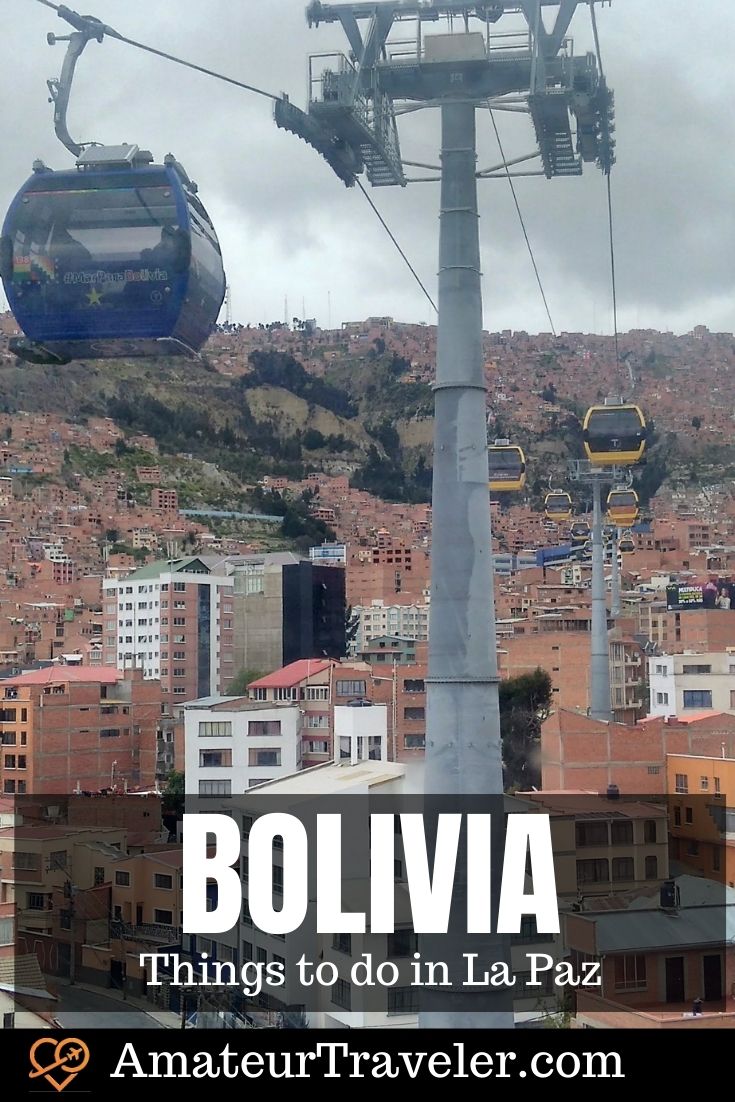
- A Quick Brief on La Paz, Bolivia
- Political Condition of Bolivia
- Best time to visit La Paz
- How much time do you need in La Paz, Bolivia?
- Language Spoken in la Paz, Bolivia
- Places to Visit and Things to do in La Paz
- Explore the Plaza Murillo (Murillo Square in English)
- Ride high in the Mi Teleféricos, the famous air-trolleys of La Paz
- Go to the Valle de La Luna (The Moon Valley)
- Visit the La Paz Witches’ Market
- Visit MercadoFeria 16 de Julio (July 16 Market)
- Bike down the Death Road, Bolivia
- Go see the fighting Cholitas (Lucha Libre de Cholitas)
- National Museum of Ethnographic and Folklore Museum
- National Museum of Archeology (Museo Nacional de Arqueología)
- Other Museums
- Eat Salteñas
- Where to eat like the locals in La Paz
- Don’t miss the celebration of the Dial de el Mar or the Day of the Sea
- Getting to La Paz, Bolivia
- How to handle the altitude in La Paz
A Quick Brief on La Paz, Bolivia
La Paz (officially known as Nuestra Señora de La Paz or in English “Our Lady of Peace”) lies in West Bolivia about 42 miles southeast of Lake Titicaca. La Paz sits part in the canyon created by the Choqueyapu River and part in the Altiplano Plateau.
The city’s altitude ranges from about 4,058 m above sea level in El Alto (where the airport is located) to 3,100 m in the lower residential areas. Illimani, the second-highest mountain of Bolivia, can be seen from many parts of La Paz.
La Paz is the third-most populous city in Bolivia. The first two are Santa Cruz de la Sierra and El Alto.
Political Condition of Bolivia
Bolivia was in an interregnum for almost a year but now the political unrest has ended. Luis Acre, the current president, formed the government in October 2020. The political and street protests also seem to have stopped now.
Best time to visit La Paz
Due to its high altitude, La Paz is never too hot. The best time to visit La Paz is between the summer months of October and April. But the summer receives a lot of rainfall so be prepared with your rain jackets and sturdy shoes. The winters (May to August) are dry but extremely cold.
How much time do you need in La Paz, Bolivia?
Though La Paz could be explored in about 4-5 days, do keep extra time for getting used to the high altitude of this city.
Language Spoken in la Paz, Bolivia
Like much of South America, Bolivians speak Spanish. You wouldn’t find many people conversing in English in Bolivia. Even locals who know English speak amongst themselves in Spanish.
To travel comfortably, it is a good idea to familiarize yourself with at least some of the common Spanish phrases and words. Duolingo, Google Translate, and SpanishDict are good applications to have on your phone to practice and translate Spanish on the go.
Sometimes people in the tourism industry also can’t convey or understand English so be prepared to explain yourself a few times.
Pro Tip: A good place to learn Spanish in Bolivia is Sucre.
Places to Visit and Things to do in La Paz
Due to its unique geography and cultural history, La Paz offers a lot to see and do to all kinds of travelers.
Let us look at some of the things to do in La Paz.
Explore the Plaza Murillo (Murillo Square in English)
Like every South American city, you should start your La Paz tour by exploring its main square, locally known as the plaza. Built in 1558, Plaza Murillo, also the July 16 Plaza, is the central plaza of La Paz and houses all important government buildings including the Presidential Palace, National Congress of Bolivia, and the Cathedral of La Paz (or the Cathedral Basilica of Our Lady of Peace).
The Presidential Palace of Bolivia is also known as Palacio Quemado, literally the Burnt Palace. The name fits the palace aptly as it has been burnt down a few times during the various political wars and revolutions. The Metropolitan Cathedral (constructed in 1835) and the San Francisco Church( founded in 1548 and rebuilt in 1784) are also located on the plaza and are worth a visit.
Pigeons flock to the plaza all day long and there is a clock here that runs anti-clockwise.
Taking a walking tour of La Paz is also a good way to get to know the history of the city and its important places. Most of these historical walking tours start from Plaza Murillo. You can find more information about the free and paid walking tours at the tourist information center of La Paz(Centro de Informacion Turistica, Avenida Mariscal Santa Cruz, La Paz Zona 2).
The tour would take a few hours.
Pro tip for South America: In the free walking tours, the participants are expected to pay a tip at the end.
Ride high in the Mi Teleféricos, the famous air-trolleys of La Paz
La Paz has the longest and the highest cable car network known as Mi Teleferico locally, and Gondola worldwide. People of Bolivia blame the government for many things, but every Bolivian is proud of the La Paz teleféricos.
These air-trolleys or teleféricos cover the entire La Paz. The teleférico station of the red line near the Witches market is known as the Estacion Central or the Central Station(Taypi Uta locally). This red teleférico will take you past the cemetery “Ajayuni” and up into El Alto.
Or take the green one from the Zona Sur and ride it to get merged into the yellow line which will then continue to the high region of El Alto, too.
Once you are in El Alto, do remember to look at the sprawling La Paz underneath you. Several local kiosks serve food at these viewpoints (miradors in Spanish) and sopa de fidello (noodle soup) or mate(local herbal drink) is never too far.
You may feel the butterflies in your stomach while climbing down from El Alto to lower regions of La Paz but that is the fun of it all.
The teleféricos require a ticket. Queues for the tickets are long in the peak morning and evening hours so try traveling during off times.
Opening hours: Monday-Saturday 6:00-23:00; Sunday 7:00-21:00
Pro Tip: Ask the guard at the station or the locals for the correct teleférico for your destination or you may end up getting out where you started from. I’m not speaking from experience.
Go to the Valle de La Luna (The Moon Valley)
Valle de La Luna is one of those bizarre geological formations on the outskirts of La Paz that are bound to make you feel like you are in an Indiana Jones movie.
About 10 kilometers out of downtown La Paz, Moon Valley is a collection of clay and sandstone pinnacles that have been formed due to the erosions of the clay mountains by rains and wind over thousands of years. Mostly sandy in color, some of these spires and mountains are deep red, too.
There are two walking trails in the Moon Valley. The two zig-zag trails would take you through different viewpoints and are marked by natural rock formations that look like handmade carvings on the stone. El Buen Abuelo (the good grandfather) is one of the popular ones of these stone figurines. Pay close attention and you might find some wild furry rabbits playing hide and seek between the mountains.
How to reach: Take a micro(a local bus) to Mallasa from near the San Francisco church. Or you can take a taxi to Valle de la Luna directly.
Opening hours of Moon Valley: 8 a.m – 5.30 p.m. Ticket costs about 15 Bolivianos.
Valle de la Luna can be seen properly in 3 to 4 hours at a relaxed pace. The time to commute is separate.
Visit the La Paz Witches’ Market
Dried llama fetuses, dried frogs, aphrodisiacs, medicinal herbs, and other natural things popular from the Aymara culture for calling in the souls and spirits of the dead are sold unabashedly in the Witches Market (Mercado de Hechiceria or Mercado de las Brujas). Stone figurines, bird feathers, and potions are common, too.
If you ask a local about the dried llama fetus, they will tell you that the fetus is important before starting any new construction. The locals bury the skeleton under the foundation of a new building or a home to please pachamama, the mother earth/nature that is divine to both Peruvians and Bolivians.
To visit the market, walk to the street Jimenez and Linares between Sagarnaga and Santa Cruz roads.
Opening time: 9:30 am to 7 pm on all days.
Visit Mercado/Feria 16 de Julio (July 16 Market)
This market is spread from the plaza 16 de Julio or Julio 16 into the El Alto city for over 200 blocks and is known to be one of the biggest flea markets of Bolivia and Latin America. Like all flea markets, everything from DVDs, pens, books, clothes, shoes, pats and pons, wooden articles, cars, traditional food, and everything and anything is sold in the Feria 16 de Julio.
Here is the Facebook page for this market. While strolling around 16 de Julio, be careful of pickpocketing. Carry only required cash and hold your bags and belongings on your front.
Opening Time: Every Thursday and Sunday all day long.
Bike down the Death Road, Bolivia
As soon as you Google search for things to do in La Paz, biking the death road will be listed as a quintessential activity to do in the capital.
My travel friend and I researched a lot on the Death Road but before I could gear up the courage to ride down a road literally called the death road, I had to leave La Paz. But my friend stayed back in La Paz and biked the Death Road later. She said it wasn’t a super tough ride and it felt perfectly okay to cycle down there.
Death Road in itself is not a very tough road to bike. It is a steep and hairpin bend studded stretch that has been marked as a Death Road because the local lorry drivers drive on the blinded turns quite fast and many lives have been lost in accidents. Accidents are still common there and many travelers told us stories of how they had fallen and the other mishaps they saw.
The risk is completely the traveler’s own. If you want to ride down the Death Road, do not read its Lonely Planet review for it will scare you away.
To do this tour, you should be a confident rider. And then just choose a good tour company and don’t compromise on the bicycle quality.
This is a full-day tour so keep one day aside and make sure to go to sleep early the night before.
Go see the fighting Cholitas (Lucha Libre de Cholitas)
Men fight the first hour of the show but soon cholitas take over.
Who are the Cholitas again? Smiling women with their bowler hats, long braids, and colorful pleated skirts, Cholitas are indigenous Aymara women who continue to follow their traditions and wrestle each other.
For 50 bolivianos (depending on if you go alone or take a tour), you can watch Cholitas wrestle for 2.5 hours while having popcorn and hooting for the woman of your choice.
Where: The fight happens every Sunday at 5 pm in Polifunctional de la Ceja, El Alto.
How to reach: Either take the red cable car and get down in El Alto. Or take a tour for this adventurous La Paz activity.
National Museum of Ethnographic and Folklore Museum
Located near Murillo Square, this museum is a window into Bolivia’s myriad of ethnic cultures, traditions, and folklore. The museum holds collections of traditional wears, carnival masks, intricate tapestries, pottery, rare books, wildlife videos, and antique culturally-significant artifacts.
Pro Tip: You can buy one ticket for three museums to see in a week. The Three Museums of the Circuit are the National Ethnographic and Folk Museum, San Francisco Museum, and the National Museum of Art (Museo Nacional de Arte). You can get this ticket at all the tourist agencies, hotels, and museums of the circuit.
National Museum of Archeology (Museo Nacional de Arqueología)
In the National Museum of Archeology, lies a collection of sculptures, figurines, mummies, monoliths, and paintings from the pre-Columbian era. Do visit this museum if you want to know more about the history of Bolivia and its many races.
Opening Time:
Tuesday to Friday 8:30 AM – 12:30 PM and 3:00 PM – 7:00 PM.
Weekends: 9:00 AM – 1:00 PM.
Monday closed.
Do carry an ID. You might not be able to understand all the information inside as most of it is not written in English. Download the Google Translate app or use Google Lens and translate on the go.
Other Museums
Some other museums to see if you are a history and/or art fan:
Museo de Historia Natural (Natural History Museum)
Try going here to make some sense of the bizarre Bolivian geology, zoology, and paleontology that might be baffling your mind.
Museum of Contemporary Art
The Museum of Contemporary Art (Museo de Arte Contemporaneo) hosts a contemporary paintings collection.
Coca Museum
The Coca Museum explains the history of the coca plant that the locals consume to avoid altitude sickness and to gain energy at such heights. Coca plant is the same plant from which cocaine is made.
Musical Instrument Museum (Museo de Instrumentos Musicales de Bolivia)
Bolivia is known for its handmade musical instruments and a visit to this museum might be good for those who are interested to know more about the origins and functioning of Bolivia’s musical instruments.
Bolivian Andean Textile Museum (Museo de Textiles Andinos Bolivianos)
The colorful weaves of old and new Bolivian communities are now getting popular around the world. If you would like to have a closer look at the Bolivian Textile evolution, then visit this museum.
Stroll around Calle Jean (Jean Street)
Calle Jean is one of the few places in the city where colonial buildings still stand tall. These buildings are full of red, pink, yellow, blue, and purple colors and are worth seeing. You can dine in the many cute cafes on the street, too.
Eat Salteñas
Salteñas are baked and fried savory empanadas of Bolivia. These savory pastries could be filled with all kinds of meat and potatoes, too.
Bolivians eat Salteñas in the morning before work, in the afternoon at lunchtime, and in the evening after work. I followed their lead and ate a lot of potato Salteñas from the carts of the cholita women that line the streets of La Paz day and night.
The curried stuffing of the empanadas is quite delicious and makes Bolivian empanadas different from the Chilean ones. Some carts or restaurants serve the salteñas with a sauce and a lemony tomato and onion salsa.
Pro tip: Do visit the ubiquitous La Paz cafes and eat the baked chocolate eclairs. Try the Bolivian coffee. The combination is pretty good.
Where to eat like the locals in La Paz
For a local experience, try the local kitchens known as Patio De Comida (food courts). Choose dishes from the pictures displayed on the glass panels of the food court or ask the local server to explain to you the options a bit. These food courts always serve a set menu for lunch and dinner that constitutes a soup, a main course, and a juice. The menu costs somewhere around 5 and more Bolivianos depending on the place.
Vegetarians and vegans should be careful while choosing a soup or a vegetarian main course. Most Bolivian soups are made with beef and accompany even a vegetarian main course. So ask about the ingredients of each part of the course and the meal to be sure.
Don’t miss the celebration of the Dial de el Mar or the Day of the Sea
If you are in La Paz around March 23rd, you will be able to see Bolivians marching on the streets to commemorate the loss of the Litoral, a deserted region of about 120,000 square kilometers along the Pacific Coast. Bolivia lost this region to Chile in the War of the Pacific of 1879.
The 23rd of March is also known as the Day of the Sea or Dia de el Mar. If you would like to know more about this war, visit the Museum of the Litoral Coastal Region.
Getting to La Paz, Bolivia
The El Alto Airport of La Paz is around 25 minutes from the city. You can also travel to La Paz by bus from almost everywhere in Bolivia. Renting a car and driving around Bolivia yourself is also an option to consider.
- Get a universal plug adapter
- Book Your Accommodation HERE
- Search for Great Tours HERE
- Get an eSim to be able to use your smartphone abroad.
- Buy Travel Insurance
- Get a Car Rental
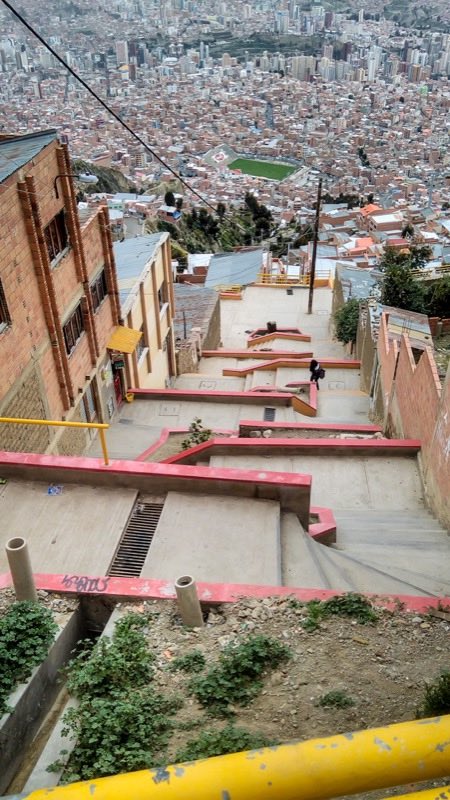
How to handle the altitude in La Paz
If you will be traveling in higher altitudes of Peru or Bolivia before heaving to La Paz, then you will be prepared for La Paz. But if La Paz is your first high destination, then take the first few days slow. The best way to get acclimatized at high altitudes is to not strain yourself physically. Don’t do anything too strenuous. Drink a lot of water and stay hydrated. Avoid alcohol.
At a high altitude, you would get tired soon and will feel a bit short of breath. Walk slow. If you feel dizzy or have a headache, then rest and drink fluids. In whatever case, do contact medical care if you don’t feel okay for a continuous period of time.
Did you like our guide to La Paz? Please let us know in the comments.
Author’s Bio: Priyanka Gupta is an itinerant writer from India who left her investment banking career to travel the world and write. Priyanka is the creator of the personal growth and travel blog On My Canvas, and she focuses on culturally immersive and offbeat travel.
Leave a Reply
Tags: adventure travel, article, bolivia, la paz

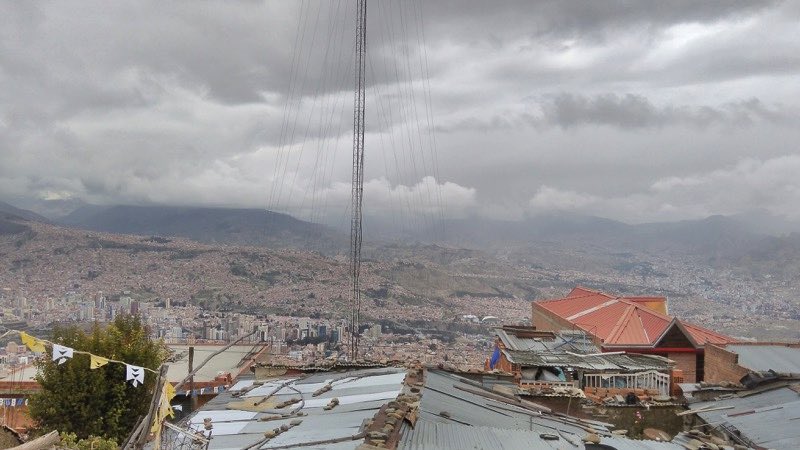


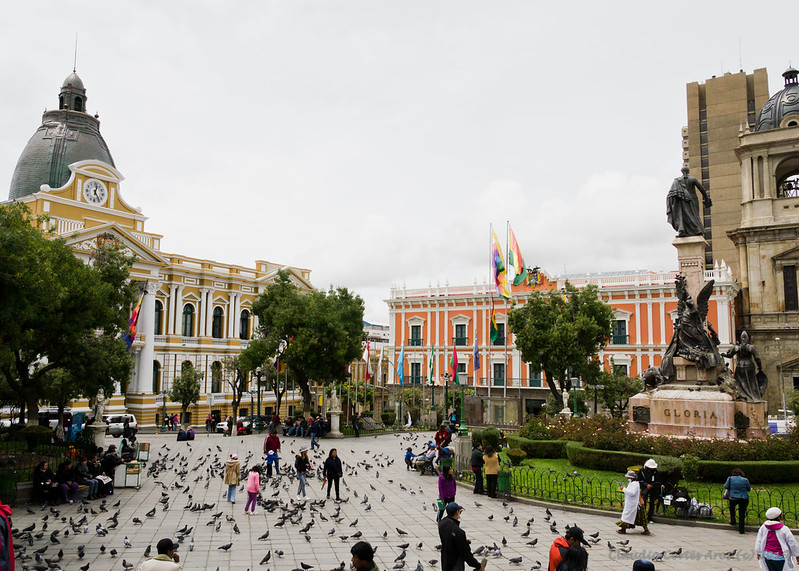
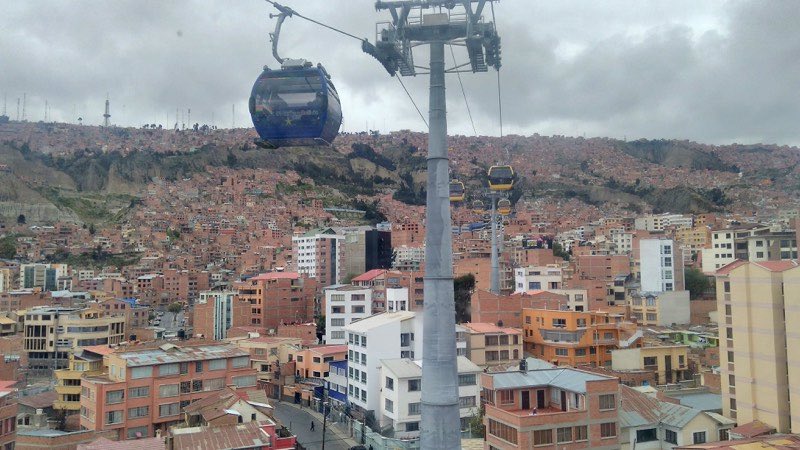
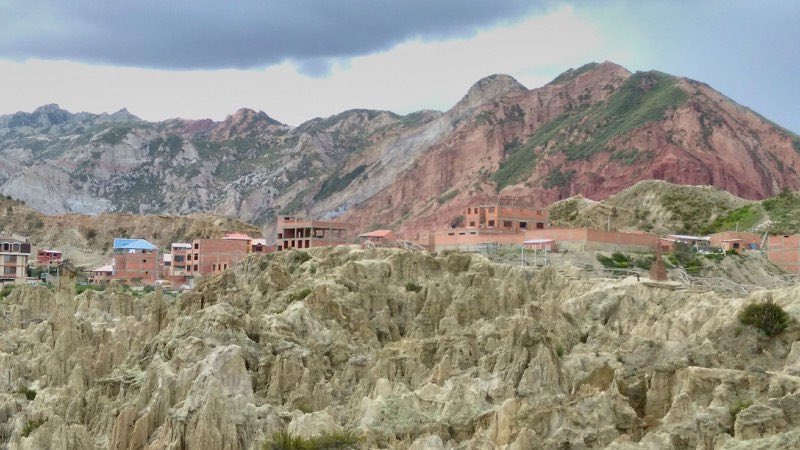

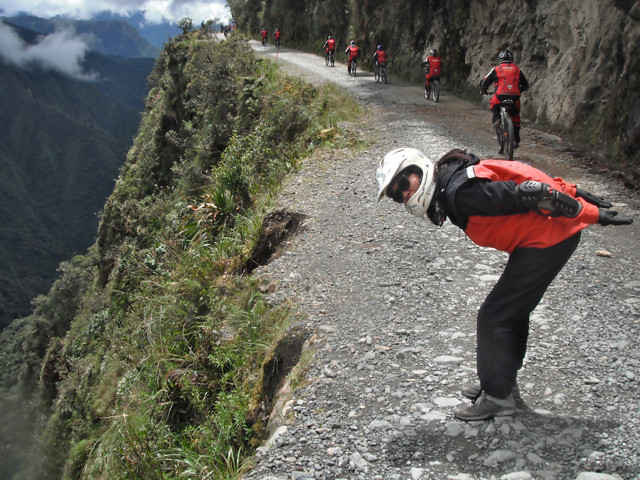


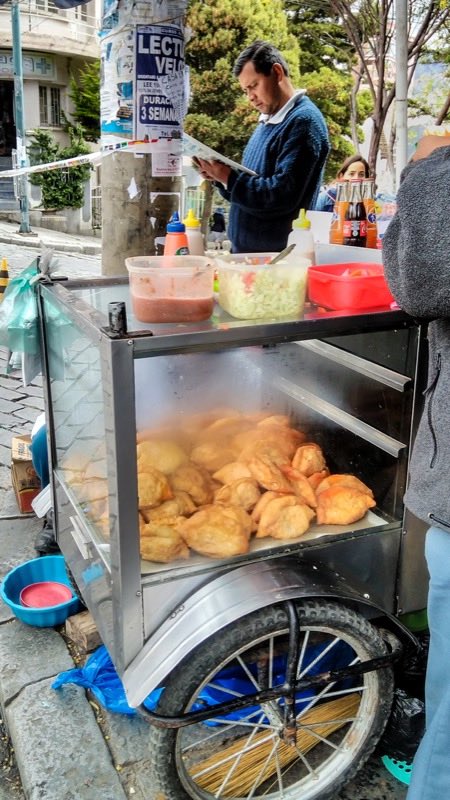

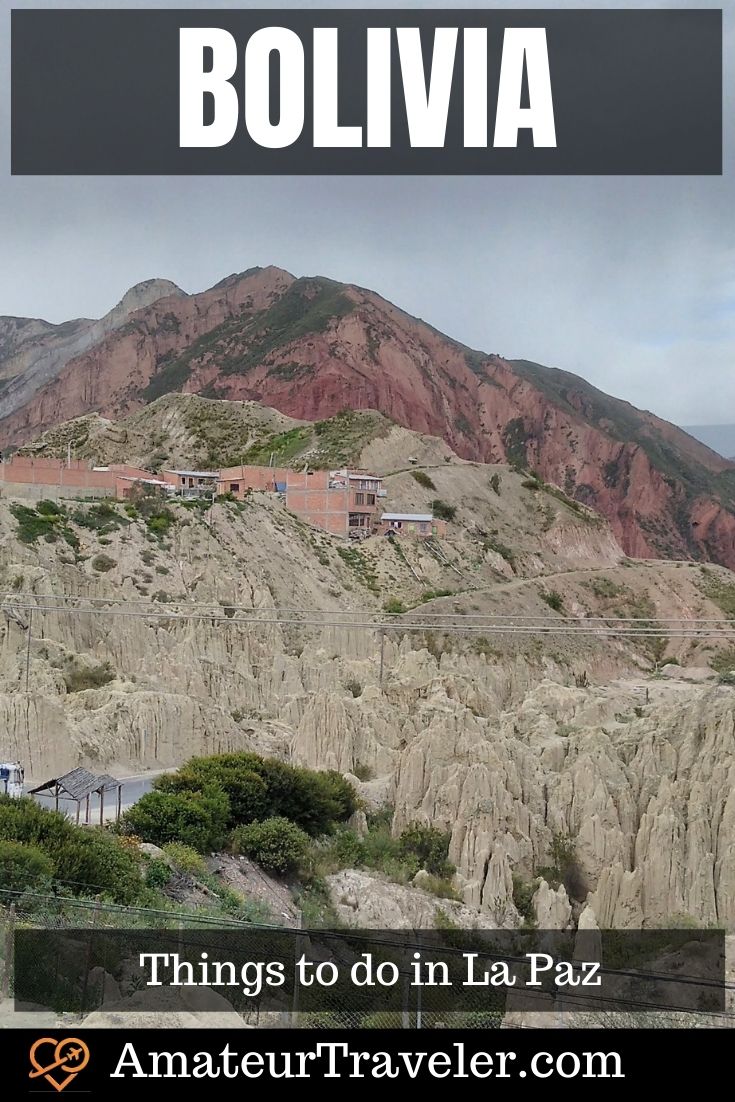
 Travel to Bolivia – Episode 313
Travel to Bolivia – Episode 313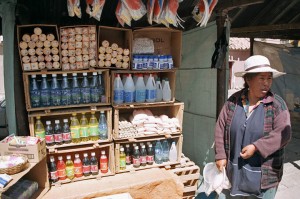 Sightseeing the Real Deal: The Mines of Potosi, Bolivia
Sightseeing the Real Deal: The Mines of Potosi, Bolivia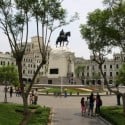 A Guide to the Museums of Lima, Peru
A Guide to the Museums of Lima, Peru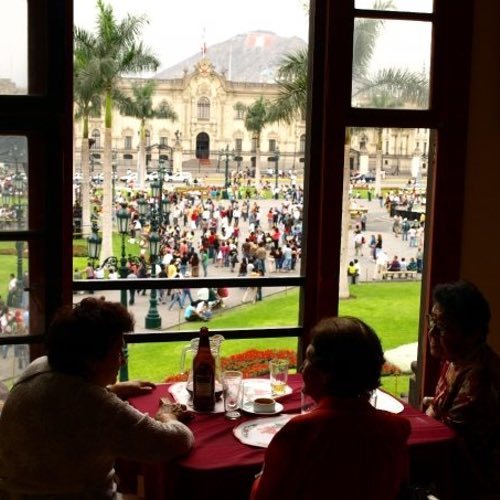 How to Spend 48 Hours In Lima, Peru
How to Spend 48 Hours In Lima, Peru
